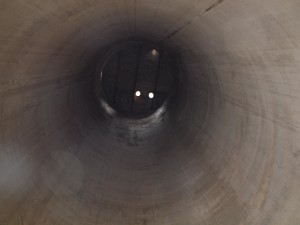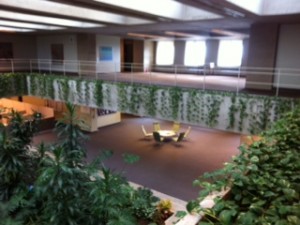The National Preservation Conference Comes to Buffalo
Last week over 2500 preservationists from around the country descended on my hometown to celebrate the rich architecture that almost no other city in America can boast. We have all been preparing our historic places since Buffalo was announced as the 2011 conference location three years ago. I’m so proud of my city and Buffalonians – every site used this third week in October as the target date to complete restoration projects and demonstration projects. The weather was seasonal, but the sun peaked through on occasion and snow was nowhere in sight. Nearly every field session was sold out well in advance and the lines around town signaled another conference event. Some of the events I went to (my own included) were some of the most informational, AND hip and groovy events I’ve ever been to. We may be part of the rust belt, but our love of our historic sites and creativity in opening them up to the public represents our fresh, new city. One visitor said to me, “Every field session I go to feels like a ‘revival’ – when I leave I’m a believer!”
Opening up the Richardson Olmsted Complex
If you’ve read my blog at all this summer, you know that I’ve been working on getting the Richardson Olmsted Complex (the former Buffalo State Asylum for the Insane designed by Richardson, Olmsted & Vaux) ready for the conference with my colleagues.

One of the 17 programs and tours at the Richardson Olmsted Complex during the National Preservation Conference.
We have spent $13 million stabilizing and weatherizing all of the buildings. In my 25 years as a preservation architect I’ve never seen such a fabulous preservation project and process. We completed an Historic Structures Report, Cultural Landscape Report and Master Plan (which can all be downloaded from our website). We spent $600,000 restoring half of the first floor of the Towers as a demonstration showcase space. Our master plan is phased and the first phase includes the three core buildings which will be adapted for use as a boutique hotel, conference center and new cultural institution – the Buffalo Architecture Center. The mental health history of the site will be interpreted in one of the restored ward floors. A Request For Proposal for an architectural team to work with our nonprofit corporation which was set up by the State of NY – the Richardson Center Corporation – goes out early 2012. We plan on opening this first phase of work in 2014. The President of Buffalo State College is on our board and working with us to establish uses for the remaining buildings. I have been on the RCC board since 2006 and amazingly proud of our work and future. I did my Master’s Thesis on the complex and have been involved with saving the site since 1985, as have many other Buffalonians involved in the board and project.
We developed a self-guided tour with exhibit panels, an 8-minute short film about the past, present and future ofthe complex and designed a guided tour and trained docents. This past week we welcomed almost 2000 visitors to our site which had been closed to the public for more than a decade. Through public tours, conference field sessions, receptions and an open house, we were able to share our story.
Braving the Weather to Celebrate Modernism
While I focused nearly all of my conference activities at the Richardson Olmsted Complex, I did have one other very different event to work on – the “Buffalo Modern” reception and tour which was a joint effort of Columbia University’s Historic Preservation program and Trust Modern (the National Trust’s department that focuses on modern preservation). Buffalo has a wealth of architectural jewels from every era and style. We set up Buffalo Modern along a spine of downtown from The Buffalo News building (Edward Durell Stone) to One M & T Plaza (Minoru Yamasaki). At The Buffalo News, attendees were treated to a tour of the 6-story printing press while at M&T they received a new monograph on the building that had just been printed last week! Despite the blustery wind, rain and cold, modern enthusiasts visited both buildings and tweeted about it all night long.
Performance Art in the Grain Elevators
Probably the grooviest event of the conference was the UB School of Architecture & Planning’s tour and reception of the grain elevators along the Buffalo River. Most of us had never been inside of them. The empty silos functioned well as echo chambers for a trio performing a soundscape by John Cage, with a cello, xylophone and percussion. The event was used to launch the Schools’ new preservation program which is starting with a sustainable preservation continuing education program this spring. I have the honor of working with my alma mater to develop this program and our first workshop is the weekend of April 27th, 2012.
So Much To See and Do
This small sample of buildings and projects I was involved with is just a small percentage of all the opportunities and events available to the conference participants. Local and national media followed participants around all week and gave us all a sense of new-found pride in what we find around us every day.
And if you’d like to “subscribe” or follow this blog, True Green Cities, please sign up through the “Subscribe” button at the bottom left of this page. You’ll receive a daily recap when new blogs are posted.



